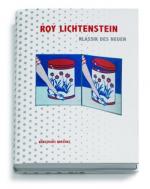|
This section contains 175 words (approx. 1 page at 300 words per page) |
Artist Roy Lichtenstein was one of the foremost members of the Pop Art movement which challenged traditional definitions of art in the 1960s. Lichtenstein's trademark style, developed by 1962, was painting in the form of a comic-strip frame. In famous works like Hopeless (1963) and Whaam! (1963), he borrowed the bright colors, flat forms, simple scenes, and printing processes of the newspaper comic and expanded them to the large canvas, right down to the "Ben Day" dots and dialogue balloons. In the mid-1960s, Lichtenstein used the style to depict images from historical art styles like Abstract Expressionism and De Stijl. While De Stijl's work seemed to critique the vapid world of everyday life and the secularization of high culture, Lichtenstein's remained ambiguous—he never explained whether he was mocking the banality of modern culture or finding beauty in the ordinary.
 Roy Lichtenstein
Roy Lichtenstein
Further Reading:
Alloway, Lawrence. Roy Lichtenstein. New York, Abbeville Press, 1983.
Coplans, John. Roy Lichtenstein. New York, Praeger Publishers, 1972.
Lichtenstein, Roy. Roy Lichtenstein: Pop-Paintings, 1961-1969. New York, W.W. Norton, 1989.
|
This section contains 175 words (approx. 1 page at 300 words per page) |


